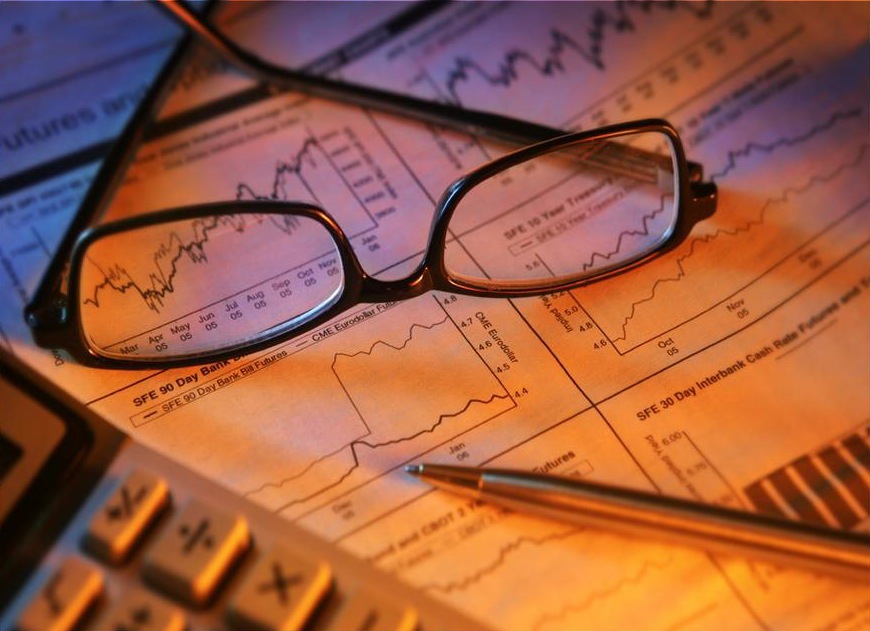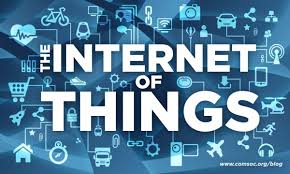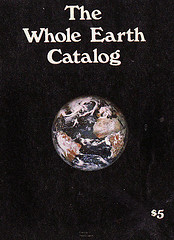Industry Analysis: The Bigger Picture
by David Mayes on Jul 19, 2013
Industry analysis is not a well-understood discipline. It sits between macroeconomic analysis and market analysis and uses tools from both. It is most commonly associated with the financial services industry which produces guides for their investors. But there are also large global consultancy firms that specialize in industry analysis. It is an important tool for governments, regional development agencies. Companies use industry analysts to assist in their strategic planning. Those who can anticipate the changes in an industry are more likely to be successful. This brief presentation provides an overview of what industry analysis is, examples of industry analysis in action, and why it is so important.
Industry Analysis: the bigger picture. Presentation Transcript
- 1. Industry Analysis: The Bigger Picture July 2013 ©David Mayes 1
- 2. Industry Analysis: The Bigger Picture David Mayes, Lecturer ©David Mayes 2
- 3. Introduction 1. Lecturer Introduction 2. What is Industry Analysis? 3. Why Industry Analysis? 4. Suggested Reading Industry Analysis: The Bigger Picture ©David Mayes 3
- 4. Lecturer Introduction ©David Mayes 4 Industry Analysis: The Bigger Picture
- 5. Industry Analysis Lecturer Introduction David Mayes: LinkedIn Profile: http://www.linkedin.com/in/mayo615 Google+ Profile: https://plus.google.com/u/0/118299264663896711410/about Email: david.mayes@ubc.ca mayo0615@gmail.com UBC Office: EME 4157 (250) 807-9331 Hours: Thurs. 12PM – 2PM or by appt. Cellular: (250) 864-9552 Twitter: @mayo615 Experience: Executive management, access to venture capital, international business development, sales & marketing, entrepreneurial mentorship, technology assessment, strategic planning, renewable energytechnology. Intel Corporation, 01 Computers Group (UK) Ltd., Mobile Data International, Silicon Graphics, Sun Microsystems, Ascend Communications, P-Cube, Global Internet Group LLP, New Zealand Trade & Enterprise. ©David Mayes 5
- 6. Introduction 1. Instructor Introduction 2. What is Industry Analysis? 3. Why Industry Analysis? 4. Suggested Reading ©David Mayes 6 Industry Analysis: The Bigger Picture
- 7. What is Industry Analysis? ©David Mayes 7 Industry Analysis: The Bigger Picture
- 8. Industry Analysis What is Industry Analysis? A Proposed Definition of Industry Analysis: Industry analysis looks at long-term trends and forces that affect an overall industry. It is a strategic analysis tool used by governments, economic development agencies, financial services & investment firms, management consultancy firms, and businesses. Current estimates and future industry projections may include consideration of a broad range of global and local factors: economic, supply and demand, individual competitors, other external future forecasts, and government policy affecting the industry. Industry analysis is commonly performed within the framework of macro- economic analysis as well as market analysis theories and tools. ©David Mayes 8
- 9. Industry Analysis What is Industry Analysis? Industry Analysis As A Discipline: • Best known in the financial services industry • Industry performance & forecast guides for investors • High profile industry analysis consultancy firms • IDC, Gartner, Forrester, dozens of others in vertical markets • Used as a strategic planning tool by companies • “How to” guides/textbooks very limited, but masses of primary statistics and reports • Seen as between macro-economics and market research ©David Mayes 9
- 10. Macro Economy: Global, Regional, National An Industry: Global, Regional, National A Market: Can Be Industry Sub- segment(s) Competitor(s) Us Industry Analysis What is Industry Analysis? Hierarchy of Economic Analysis OUR FOCUS ©David Mayes 10
- 11. Industry Analysis What is Industry Analysis? IDC Forecasts Worldwide Semiconductor Revenues Will Reach $305 Billion in 2012 IDC Forecasts Worldwide Semiconductor Revenues Will Reach $305 Billion in 2012 Business Wire FRAMINGHAM, Mass. — December 15, 2011 “Despite the continuing global macroeconomic problems, semiconductor inventory overbuild early this year, and current DRAM oversupply, semiconductor revenues will register positive year-over-year (YoY) growth of 3.4% and 3.1% with $296billion and $305 billion for 2011 and 2012, respectively, according to the year-end 2011 update of IDC’s Semiconductor Application Forecaster (SAF).”The 2011 year-end update reaffirms the views IDC expressed in its qualitative SAF update published in November 2011….” Yada yada yada… Full Report Price: $1,000, other reports up to $10,000 Industry Analysis Example ©David Mayes 11
- 12. Industry Analysis What is Industry Analysis? http://www.youtube.com/watch?v=31SpS3 6ynDs&hd=1 Semiconductor Industry Analysis: Intel Cuts 2012 Outlook on Hard Drive Shortage (Flood in Thailand) ©David Mayes 12
- 13. Industry Analysis What is Industry Analysis? http://www.youtube.com/watch?v=- I50V4PO1y4&feature=g- wl&context=G25b6f51AWAAAAAAAAAA Information Technology Industry Analysis: Samsung Economic Research Institute ©David Mayes 13
- 14. Industry Analysis What is Industry Analysis? http://www.economist.com/node/21541746 The Economist on Video Gaming: World of Warcraft vs. New Market Entrants ©David Mayes 14
- 15. Industry Analysis What is Industry Analysis? http://www.dailymotion.com/video/xblts0_in dustry-analyst-jesse-divnich-on- v_videogames Video Gaming Analyst Jesse Divnich on the Video Games Industry ©David Mayes 15
- 16. Industry Analysis What is Industry Analysis? Answer: Huge consumption of microprocessors for game consoles “Over the past two decades the video-games business has gone from a cottage industry selling to a few niche customers to a fully grown branch of the entertainment industry. According to PricewaterhouseCoopers (PwC): • Global video-game market worth around $56 billion last year. • More than twice the size of the recorded-music industry • Three-fifths the size of the film industry, Including DVD sales Video games will be the fastest-growing form of media over the next few years, with sales rising to $82 billion by 2015.” — The Economist. December 10th, 2011 How Does The Video Games Market Relate to the Semiconductor Industry? ©David Mayes 16
- 17. Industry Analysis What is Industry Analysis? Leading Industries in Canada (GDP): • Aerospace (5th largest in the World) • Agri-food (4th largest exporter) • Automotive (3rd largest exporter in World) Leading Industries in British Columbia (GDP): • Construction • Manufacturing (?) • Mining & Gas Extraction Leading Industries in the Thompson Okanagan (GDP): • Construction • Manufacturing • Services (retail, tourism, etc.) Key Industries in Canada ©David Mayes 17
- 18. Questions? What is Industry Analysis? ©David Mayes 18
- 19. Industry Analysis 1. Instructor Introduction 2. What is Industry Analysis? 3. Why Industry Analysis? 4. Suggested Reading ©David Mayes 19 Industry Analysis: The Bigger Picture
- 20. Industry Analysis Why Industry Analysis? ANSWER: Large scale economic shifts caused by demographic, geographic, political, technological and social changes can create new opportunities or can lead to the demise of a company. Competitors that can anticipate these large-scale economic shifts are more likely to survive. Why Industry Analysis? ©David Mayes 20
- 21. Industry Analysis Why Industry Analysis? • Government Policy • Taxation, incentives, international export market development • Focused Economic Development Programs • Which industries should be promoted? • Example: New Zealand Trade & Enterprise* • Institutional/Individual Investment Management • Tracking Industry Trends and Growth • Management Consultancy Firms • Strategic Business Decisions on Markets • Individual businesses Why Industry Analysis? ©David Mayes 21
- 22. Industry Analysis Why Industry Analysis? • Federal, Provincial Ministries & Economic Development Agencies • Canadian Ministries of Industry and International Trade • BC Ministry of Energy, Mines and Petroleum • Central Okanagan Regional Development • Financial Services and Investment Firms • BMO, CIBC, RBC, TD Canada Trust, credit unions • Stock brokerages • Financial news networks • Management Consultancy Firms • Accenture, BCG, HP, IBM, PWC, Forrester, Gartner, IDC • Businesses • Executive management, strategic planning units • Corporate positioning, SWOT, long range planning Who Conducts and Uses Industry Analysis? ©David Mayes 22
- 23. Industry Analysis Why Industry Analysis? Example: New Zealand Trade & Enterprise Marketing an Entire Nation as an Industry http://www.nzte.govt.nz/Pages/default.aspx http://www.youtube.com/watch?v=eh-0knDpn5g ©David Mayes 23
- 24. Industry Analysis Why Industry Analysis? Example: International Data Corporation (IDC) http://www.idc.com/prodserv/maps/consumer.jsp ©David Mayes 24
- 25. Industry Analysis Why Industry Analysis? Example: Central Okanagan Economic Development Commission http://investkelowna.com/ ©David Mayes 25
- 26. Questions? Why Industry Analysis? ©David Mayes 26
- 27. Industry Analysis 1. Instructor Introduction 2. What is Industry Analysis? 3. Why Industry Analysis? 4. Suggested Reading ©David Mayes 27 Industry Analysis: The Bigger Picture
- 28. Industry Analysis Suggested Reading: Suggested Reading: HBR’s 10 Must Reads on Strategy, Harvard Business Press, 2011 (HBR article anthology). Blue Ocean vs. Five Forces, Burke, A.E. (HBR journal article, online) http://toby.library.ubc.ca/subjects/subjpage2.cfm?id=660 How to Conduct An Industry Analysis, Small Business and Technology Development Center, http://www.sbtdc.org/pdf/industry_analysis.pdf ©David Mayes 28
- 29. ©David Mayes 29
















